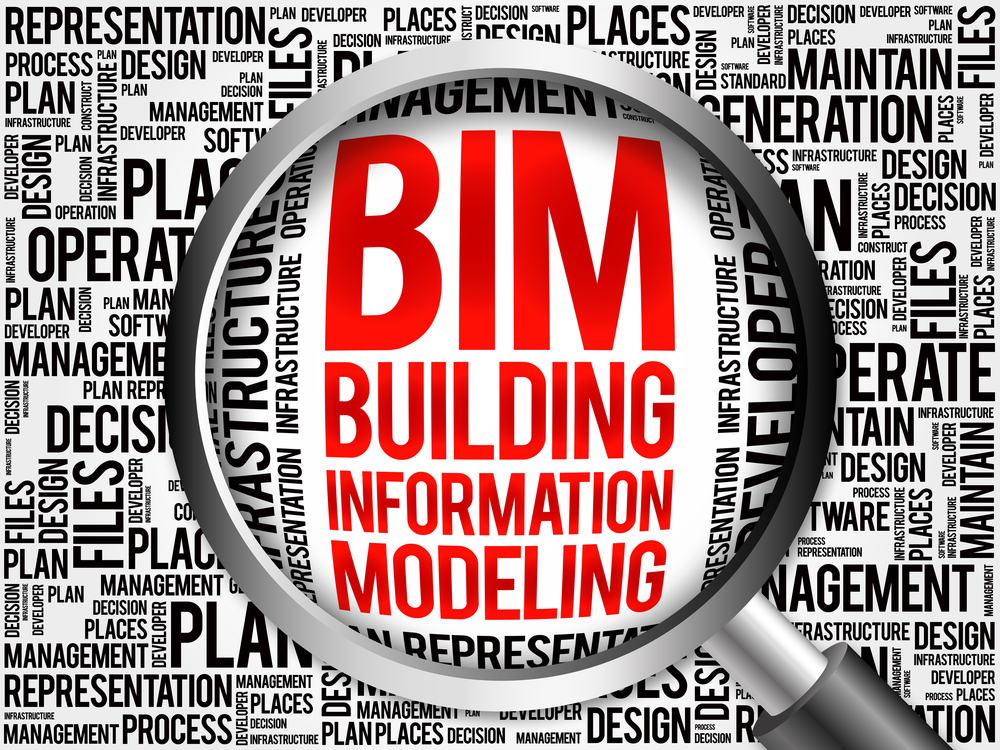Due to digitalization of construction and operation of buildings, the so-called BIM design is becoming increasingly widespread. In English, BIM means Building Information Modelling.

During BIM designing, a 3D model of the building is created (sometimes, a 4D model is mentioned, wherein the fourth dimension is time) associated with the database. Each model element can be assigned particular attributes. Note the following major differences of BIM design compared to the previous approaches:
- A single model covers the entire building cycle, starting from the design stage. When the building's owner (an operating company) changes, the model is provided to a new owner (an operating company).
- A single approach to provide any building information. Any data should be compatible with the model.
- Changes in one of the parameters automatically result in recalculation of the other data, upon which they somehow depend.
If required, BIM design can also be created for an already existing building. But this is a rather complex task, especially if a house was built when there were no unified standards, and many building elements were not documented. Therefore, BIM design generation for existing buildings is used very rarely.
The use of a BIM approach allows simplifying design and construction, reducing the human factor effect, reducing the cost for the building operation, and mitigating the environmental impact. The BIM use allows reducing hardcopy documents or (when legislation permits) avoiding it at all.

BIM has been actively used abroad since 2000s. It is also somehow used nationally, although until recently, we could only talk about separate projects. Now, a resolution is taken to progressively transfer the industry to this approach. According to the Government Regulation, the transfer of the Russian construction to the BIM design starts from January 1, 2022.
Regulatory base
By the beginning of the massive transfer to BIM, Russia has already created the respective regulatory framework including several GOSTs and Codes of Practice. In particular, the term "information model" is used in Article 48 of the RF Town Planning Code. GOST R 21.101-2020 System for Design Documentation for Construction. Key Requirements to Design and Detailed Design has come into force. An open IFC standard has been adopted as a main BIM format in Russia. The decision was made to preferentially use the Russian software.
From the viewpoint of lightning protection and grounding, the most important document is probably SP 333.1325800.2020 Information Modelling in Construction. Rules for Generating Information Models of the Facilities at Various Lifecycle Stages. This Code of Practice was approved by the RF Ministry and came into effect in 2021. It replaced the previous version of this CoP developed in 2017, which was cancelled.
The DIM abbreviation, i.e. Digital Information Model, is used in official documents effective in Russia to replace the BIM term.
Description of lightning protection and grounding in DIM
Description development levels in DIM are designated by Latin letters from A to G, where the most detailed description corresponds to G. The element boundaries should be indicated for all levels, the edges of various materials in an element, starting from level B, and interface assemblies with other elements - starting from level C. With this, level A is used at the engineering stage, B is for a design model, C is for a construction model, D is for operation, and G is for demolition.
SP 333.1325800.2020 contains data that must present in DIM provided in Appendix E Mandatory Attributes of Described Element Types of the Digital Information Model for the Capital Construction Facility.
Mandatory data for lightning arresters are provided in Table D.105. These are the lightning arrester type, the material, and the cross-section. The data are provided according to GOST R IEC 62561.2.
The information for the current collector should be included into DIM according to Table D.104. We are talking about the current collector type, the material, and the cross-section.
Grounding arrangement in DIM are characterized by types according to GOST R 57190, the material according to GOST R 50571.5.54, as well as the installation depth and service life.
Data on lightning arrester, current collector, and grounding arrangement are taken from data sheets of the respective products. The information should be present in DIM, starting from development level B.
Data on reinforced concrete and metal structures of the building
To assess the possibility to use the building foundation as a natural grounding arrangement, some data can be used which must be included in DIM.
Table D.3 requires indication of the foundation type and waterproofing measures used therein according to SP22.13330. According to Table D.8, the thickness of the protective concrete layer is shown. If the foundation is made of piles, data described in Table D.5 related to pile characteristics are shown.
To make a decision on the possibility to use reinforced concrete elements of the building structure as natural current collectors and grounding arrangements, we should know whether the reinforcement electrical continuity condition is met. Table D.7 shows data on reinforcement to be included into DIM. You can obtain the reinforcement type: grid or standalone rods from the table. Moreover, there is an information on the presence of welded connections in the reinforcement. If a grid and welding are used, you can be sure in the connection continuity. But what can we do if bars in the reinforcement grids are interconnected using screw connections, which is common in the single-family house construction? Such data may not be included into DIM. Thus, we should request, as before, data on connection methods for the reinforcement bars immediately from builders and designer, if we are not talking about welding.

Table D.9 states a list of data on metal structures. It is clear for continuous metal structures, since they can be used as current collectors. But what can we do with metal structures which should not be continuous? Data on their connection methods are not required in the list. Therefore, again, we will have to obtain them from builders and designers directly.
Using infrastructure elements as grounding arrangements
To make a decision on the possibility to use water pipes laid in the soil as a natural grounding arrangement, data provided in Table D.41 are important, i.e. pipe materials and connection method. The material is specified according to the product data sheet, but we have questions to the wording used in SP 333.1325800.2020. What material are we talking about: the main material used in the production or all materials used in pipes? In any case, there are no separate data on the material of the protective pipe coating. If a pipe has a thick protective coating made of a dielectric material, we cannot use it as a grounding arrangement.
Similar situation exists when we use metal cable sheaths as natural grounding arrangements. Cable parameters are described in DIM according to Table D.29. There, in particular, information on cable marking should be added according to GOST 31947 and GOST 31565. But we cannot infer a definite conclusion from such marking on whether the metal cable sheath contacts soil or has a protective layer above which does not conduct electricity.
Moreover, wide spread of water polymer pipes and polymer sheaths for cables made the use of the respective infrastructure elements for the arrangement of natural grounding an obsolete solution. Since the BIM approach is oriented primarily towards the construction of new buildings, the mandatory presence of DIM information that allows designing this type of grounding arrangement would not have a practical sense.
Conclusions
Standards of SP 333.1325800.2020 allow making a definite conclusion based on DIM on the suitability of the building structures as current collectors and grounding arrangements as industrial and office buildings as well as typical multi-apartment buildings. If we are talking about single-family houses or buildings where unusual architecture is used, additional information may be required to design lightning protection and grounding. Moreover, also an expert assessment based on a large lightning protection and grounding design experience for various facilities. Surely, when desired, architects and designers may use in DIM more detailed information required to create lightning protection and grounding until they are obliged to do that.
In order to help in designing lightning protection and grounding in the BIM environment, we have developed models and families for special equipment. Obtain solutions for lightning protection and grounding from the engineers of the Zandz.com Technical Centre! We are looking forward to receiving your task and an IFC model!
Related Articles:



